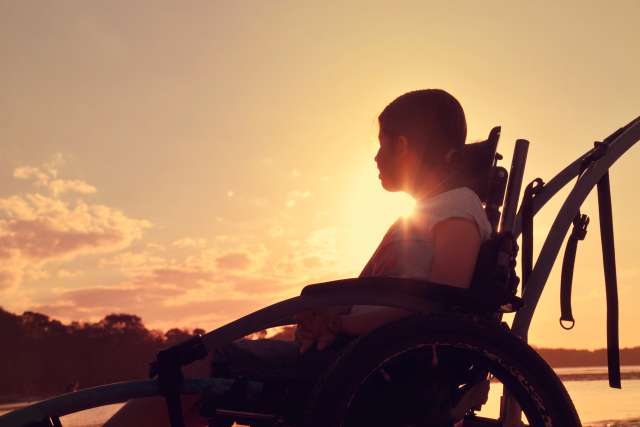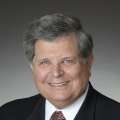Cerebral Palsy
Our multispecialty team provides comprehensive cerebral palsy care throughout a patient’s journey, supporting long-term health, independence and quality of life.

Why Choose UCLA Health for Cerebral Palsy Care
Our Center for Cerebral Palsy is the only multispecialty clinic in Los Angeles caring for people with cerebral palsy (CP) throughout their entire lives. Whether your child has a new diagnosis or you’re an adult with cerebral palsy, our experts offer compassionate, research-based care.
Highlights of our program include:
Multispecialty care: Your care team includes orthopedic surgeons, physiatrists, interventional spine care specialists, social workers, physical therapists and neurosurgeons. We also work closely with neurology and developmental pediatrics. If you need any additional services, we connect you with other UCLA Health physicians.
Broad range of treatments: Children and adults with cerebral palsy may benefit from therapies to improve comfort, mobility and independence. UCLA Health offers comprehensive CP treatment ranging from physical therapy to pain management and advanced orthopedic procedures. Learn more about cerebral palsy treatment.
Collaborative care planning: We partner with you and your family to make care decisions together, setting goals that reflect medical needs and personal preferences. We take time to understand what matters most to you. This information helps us develop plans that optimize quality of life.
Groundbreaking research: At UCLA Health, our care reflects the latest advances in cerebral palsy research, some of which our team helped develop. Patients benefit from new care methods and may be eligible to participate in clinical trials exploring promising new therapies. Explore the Cerebral Palsy Muscle Disease Research Laboratory.
What is Cerebral Palsy?
Cerebral palsy is a developmental disorder. Each year, approximately 10,000 children are born with CP. It is the most common childhood motor disability in the United States, affecting about 764,000 children and adults. CP develops when brain damage occurs during fetal development, during or shortly after birth, or during infancy.
CP can look different in everyone. Depending on the location and extent of the brain injury, some people have barely noticeable symptoms, while others have symptoms that significantly affect their daily function. In general, CP can affect:
- Balance and coordination
- Breathing and eating
- Intellectual abilities
- Learning abilities
- Motor control
- Speech and language
- Vision
Learn more about cerebral palsy.
Our Areas of Care
Our CP specialists care for patients in several settings:
UCLA Santa Monica Medical Center
Adults with CP receive treatment at our Center for Cerebral Palsy at the UCLA Santa Monica Medical Center. Children may also receive care here if it’s a more convenient location.
Kameron Gait and Motion Analysis Laboratory
Patients may be referred to the Kameron Gait and Motion Analysis Laboratory. We use specialized tools to learn more about your walking patterns (gait), muscle strength and flexibility. Find out more about cerebral palsy evaluation at the laboratory.
Luskin Orthopaedic Institute
UCLA Health and Luskin Orthopaedic Institute (LuskinOIC) run a joint program for children and young adults (up to age 21) with cerebral palsy.
What to Expect at Your First CP Appointment
At your first visit, patients undergo a comprehensive evaluation with our team. Together, we review our assessments with you and set goals for treatment.
Depending on your needs, a new patient appointment may include consultations with:
- Orthopedic surgeons
- Physical medicine and rehabilitation specialists (physiatrists)
- Physical therapists
After we develop a treatment plan, we may refer you to experts in various specialties to help you get complete care:
Pediatric specialists:
- Developmental-behavioral pediatrics
- Gastroenterology (digestive health)
- Neurology
- Neurosurgery
- Ophthalmology
- Pain management
- Urology
Adult specialists:
- Gastroenterology (digestive health)
- Head and neck surgery
- Neurology
- Neurosurgery
- Ophthalmology
- Pain management
- Urology
Cerebral Palsy FAQ
-
If you have a health maintenance organization (HMO)/managed care plan, your insurance requires authorization before you can make an appointment. This includes MediCal HMO or California Children’s Services (CCS). Your physician should make the authorization to:
- UCLA Orthopedics for our UCLA Santa Monica Medical Center location
- Orthopedic Institute for Children or Orthopedic Hospital for our downtown location at LuskinOIC
Call our team at 424-259-6593 for questions about insurance, referrals or authorizations.
-
Yes, we treat adults with CP at our UCLA Santa Monica Medical Center location. Cerebral palsy is a lifelong condition, and we’re dedicated to providing ongoing care.
-
Doctors may suspect CP in early infancy. In mild cases, it may not be possible to get a definitive diagnosis until babies are around 18 to 24 months.
-
You may consider getting your child an evaluation if they show certain signs, including:
- Delays in milestones, including head control, rolling, sitting, crawling or walking
- Difficulty feeding or choking when they’re fed
- Excessive irritability, especially combined with arching their neck or back
- Over- or under-reactivity to noisy or stimulating environments
-
No, CP isn’t curable. But children with CP can grow up to be functional and independent. The earlier children receive treatment for CP, the more likely they are to experience good long-term outcomes.
-
Cerebral palsy isn’t progressive, which means brain damage doesn’t worsen over time. However, children’s symptoms may change as they grow. These changes are related to their bones and muscles growing in ways that aren’t typical.
-
The brain problems that cause CP also affect the brain’s ability to control muscle activity. Because of this, children may have muscle imbalances affecting how their bones develop.
-
Our research shows that many adults with CP experience typical age-related changes faster than people without the condition. It’s not uncommon to start using a cane or wheelchair when you used to walk without assistance.
Sometimes, a strategic exercise program can help you walk more smoothly again. You can get an evaluation from our team for specific recommendations.
-
Our program accepts most insurance carriers. Some insurance plans, such as HMOs, require you to get authorization before you see our team. If you have any questions about your insurance plan and its requirements, call us at 424-259-6593.
Meet Our Team
UCLA Health brings together specialists in orthopedic surgery, neurology, rehabilitation and more. This multidisciplinary approach helps us address complex needs and supports the well-being and mobility of children, teens and adults. By working closely with patients and families over time, we create care plans that evolve with their goals and support an excellent quality of life.
Our Team


Contact Us
Call 424-259-6593 to learn more about our program or request an appointment with a cerebral palsy expert.






